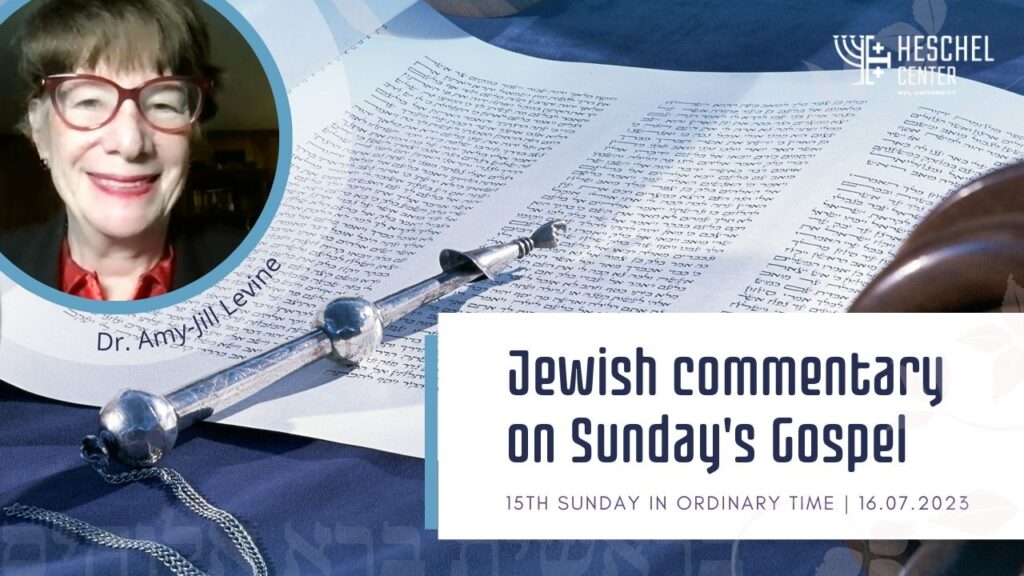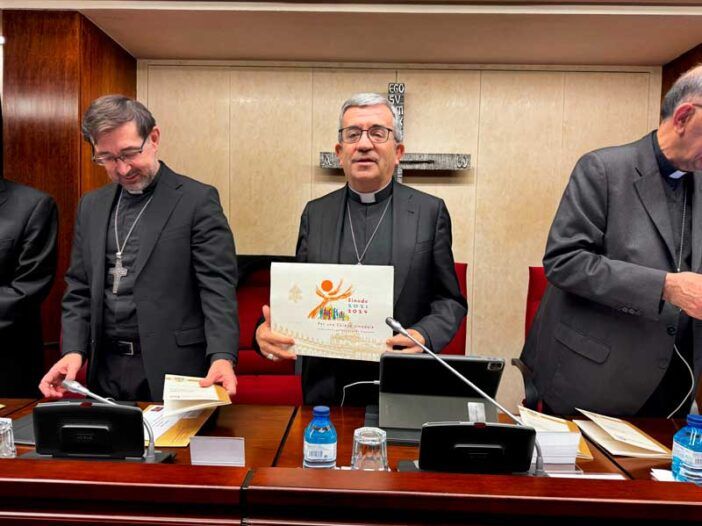Stories not only for children – parables heard with first-century Jewish ears
Dr. Amy Jill-Levine for KUL Heschel Center

Generally, people regard parables as children’s stories with a simple message: the Good Samaritan means we should help injured people; the Prodigal son means that God forgives sinners, and so on. But to stop at the level of childhood is to miss the profound nature of the parables.
A form of storytelling well known in Jewish sources, parables are designed not simply to instruct, but to help us re-think our actions and our relationships.
How do we hear parables with first-century Jewish ears, ears that initially heard the story?
First, we recognize that parables, like all stories, open to multiple interpretations. Jesus describes a sower (Himself? A missionary?Anyone?), who broadcasts seeds indiscriminately, on the path, on rocky soil, amid thorns. Grain was expensive, and farmers were careful to sow their seed on already plowed and fertilized soil. This is no ordinary sower.
We next learn that birds ate the seed on the pathway, that the sun scorched the seed on rocky ground, that thorns choked still more seed. But the seed on the good soil yielded an excellent harvest. What are we to do with this strange sower and his strange story?
The disciples don’t know, so they ask Jesus in private. Jesus blesses their eyes and ears for seeing and hearing, respectively, the Messiah and the Gospel. They are the insiders. People on the outside, he suggests, will not understand.
Then, Jesus provides an allegorical explanation: the seeds are people who are evangelized. Some lack understanding and are deceived by Satan; some fall away when faced with persecution; some are choked by anxiety or wealth; some remain faithful.
Insiders vs. outsiders; disciples vs. crowds; saved vs. damned – it all seems neat and tidy.
There are four major problems with this neat and tidy explanation.
- First, as we know from the rest of the Gospel, the disciples consistently fail to understand Jesus. Judas betrays him; Peter denies him; all flee from Gethsemane. The insiders clearly miss the message. Yet outsiders – Peter’s mother-in-law, a man suffering from leprosy, a woman suffering hemorrhages, a gentile centurion pleading on behalf of an enslaved member of his household, a Canaanite woman, an unnamed woman who anoints Jesus, the centurion at the cross – display understanding. Outsiders may be the more faithful, and that those who think of themselves as privileged because of insider status should think again.
- Second, while Jesus provides this parable an allegorical explanation, most NewTestament parables lack explanations. Therefore, they are invitations to all readers to discover meanings for themselves.
- Third, the allegory suggests that disciples are to spreadTheGospel to all, regardless of their judgment of the soil. They can never know which seeds will take root. The disciples are to proclaim The Gospel and then live it by feeding the hungry, clothing the naked, visiting people in prison…; they are not to judge who are insiders or outsiders, saved or damned.
- Fourth, the parable suggests that soil does not change. But it does, as Luke 13.6-9, the parable of the unproductive fig Tree, tells us. In that parable, when the landowner wants to uproot the unproductive tree, the gardener responds, “Let it alone for another year, until I dig around it and put manure on it.”
Soil can be made more productive; rocks can be cleared away; thorns can be uprooted. Even seeds eaten by birds will return to the soil. They are never lost.
The good news is that no seed, no one, is without the possibility of repentance and redemption.
The warnings are against judging Others and against boasting of insider status.
The challenge is that we all should work to ensure that the soil is fertile – we do that by nurturing others and by removing whatever rocks and thorns prevent wholeness and shalom. The yield when we heed the Good News, attend to the warnings, and accept the challenge, is enormous.
About the author:
Prof. Amy-Jill Levine is a Professor of New Testament and Jewish Studies at Mary Jane Werthan University’s Vanderbilt Divinity School, Graduate Department of Religion and Department of Jewish Studies, as well as the Woolf Institute, Centre for the Study of Jewish Christian Relations, Cambridge UK. She has delivered more than 500 lectures on the Bible, Christian Jewish Relations, and religion across the world. In the spring of 2019, she became the first Jewish Woman to lecture on the New Testament at the Pontifical Biblical Institute in Rome; in 2021, she was elected a member of the American Academy of Arts and Sciences.
Related

“The priest finds his reason for being in the Eucharist”
Fundación CARF
01 April, 2025
5 min

Family Valued: An international appeal for the family
Exaudi Staff
01 April, 2025
2 min

Bishop Luis Argüello Addresses the Challenges of the Church in Spain
Exaudi Staff
01 April, 2025
2 min

THE WAY OF THE CROSS: Accompanying Jesus on the way to the Cross
Luis Herrera Campo
31 March, 2025
5 min
 (EN)
(EN)
 (ES)
(ES)
 (IT)
(IT)

